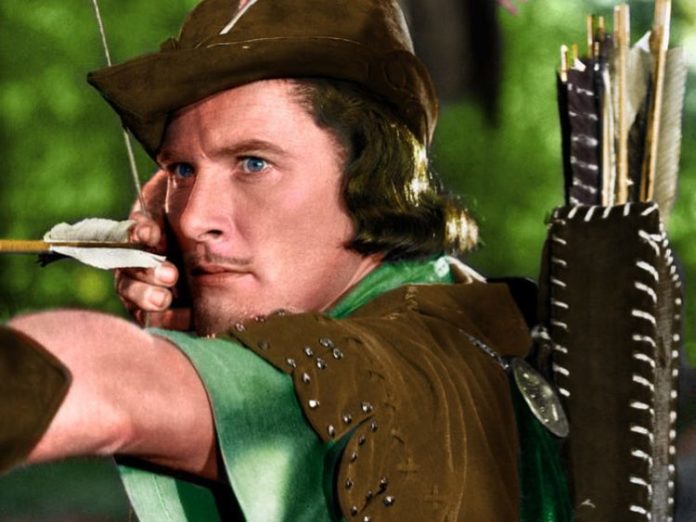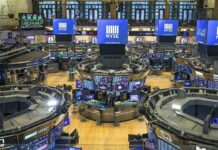By definition, reputation and history, trading firms are predatory. Some trading firms seek to get the advantage over other traders, while others seek to get the edge over business competitors and in some cases, even their own customers.
So, when a trading firm offers free commissions to retail traders for their options and securities trades, it demands additional scrutiny.
Enter, Robinhood, the Silicon Valley trading firm that offers free commissions and no minimum starting balances to its retail customers. As a Menlo Park trading firm, as opposed to other East Coast brokerage firms that also offer no commissions, Robinhood has focused on novice young traders, (its average customer is 23-years-old) who have no or limited trading experience.
Robinhood said it offers “investing for everyone,” but trading is very different from investing. To gain a large, young audience, the firm has dumped the staid Wall Street image and offers its young clients’ options and equity trades via a single click. When someone makes a winning trade, their screen will see a shower of confetti, while their phone will get a notification accompanied by an emoji.
To Robinhood’s young customers, trading resembles a game, but it increasingly seems to be a loser’s game.
Under the best of circumstances in today’s volatile markets, trading carries a high risk of loss. Specifically. options trading, a main product of Robinhood, is a time-tested market and offers strategies ranging from very conservative (covered call writing, for instance) to complex multi-legged strategies spanning different strike prices and expiration dates. In many options trades, the leverage is greater than what is available in futures trading, another high-risk market.
So, as Robinhood has attracted more investors and its market valuation reached $11 billion, it has also attracted more scrutiny about how it is offering free commissions, as well as how it is making money and its price improvement protocols.
At the top of the list of questions from some observers is whether the firm is adequately educating its customers about trading risks. But more importantly, the issue is whether its business model is based more on social media than it is on providing investor protections.
Social Media vs. the Trading Business Model
While many news stories have dealt with the concept of payment-for-order flow model used by Robinhood to defray its expenses and allow its customers to trade commission-free, they have not addressed how market makers are using the accumulated trading histories of retail clients to make money.
Since Robinhood is a Silicon Valley creation, it makes sense that they would follow the social media and search firms’ examples and make its customer into the product and then sell their data to market-makers who are the real customers. In Robinhood’s case, they sell their clients trades to the market-maker, Citadel. It is Citadel that pays for Robinhood’s customer’s trades and their trading histories.
So how much is a customer’s trading history worth to a savvy market maker like Citadel?
According to Richard Smith, Ph.D., Robinhood was the largest generator of Daily Average Revenue Trades or “DARTs” among retail trading firms at 4.3 million per day. More interestingly, market-makers were willing to pay more to Robinhood than Charles Schwab to service their equity trades; 17 cents for Robinhood vs. 11 cents for Schwab. 
For options traders, the difference was even greater: 58 cents to Robinhood vs 36 cents to Schwab or 60% more for a trade from Robin Hood. To Smith, this price difference “speaks volumes” because the market-maker is paying more for access to novice, unsophisticated traders.
And history shows that these are the traders who over-trade, make bad decisions, and lose money. A new study by E-Trade found that Millennials and Gen Z traders are assuming more risk, trading more and bringing in new cash into their accounts. Specifically, the study found that “Over one in three investors (34%) under the age of 34 said they are moving out of cash and into new positions, 15 percentage points higher than the total population.” Unfortunately, the study did not say of these young traders made money. My bet is they didn’t.
Smith said he is concerned that the movement for free execution services has changed the brokerage business fundamentally. “If something is free, it means you (the trading customer of the brokerage firm) are not the customer; you now have become the product.”
This has made Robinhood “more like Google than like a traditional trading brokerage firm because of its business model and technology. Plus, they have high-tech VC funds that are guiding, coaching them, and influencing their business direction. This is why Robinhood is bundling trades to the market-maker, just like Google bundles clicks to sell to big advertisers.”
This presents a fundamental conflict of interest and an information gap that benefits the brokerage firm and market-makers. This is because the business model of the broker encourages and incentivizes its customers to trade more and overtrading does not work, Smith said. He cited a 2002 study by Brad Barber and Terrance Odean that retail investors suffer from huge portfolio turnover and “that trading is hazardous to your wealth.” Another study from Brazil found that 97% of day traders lost money and did not make more than the minimum wage.
Financial regulators in the European Union are now requiring their FOREX brokers to publish what percent of customers make or lose money. As of July 2020, the average broker found that 75% of their customers did not make money and one broker had 100% of its customers losing money.
“The whole retail brokerage industry has an incentive problem that is not being aligned with the goals of building the long-term success of its clients. This is one reason why most of them consistently lose money.” Smith said.
Smith’s Suggestion: “Slow Down”
Smith is a Berkeley Mathematician who holds a Ph.D. in System Science, and has earned the nickname as “The Doctor of Uncertainty.” He also is the CEO of The Foundation of the Study of Cycles.
According to Smith, “Robin hood can build an enduring brand, but they have to help their customers and build trusting relationships with a whole new generation.
“They have an unbelievable business. They brought in three million new accounts, so they must be doing something right. But that is only half the story. I would say to Robinhood’s trading customers, ‘slow down.’ You have 50 years to build wealth that compounds over the decades, but that will only happen if you slow down and learn about it.
“The Robinhood name says they are there to help the average person. But the latest DART data shows that they are not concerned about the longevity of customers,” Smith said.
“Robinhood should put in the guard rails, so their less-educated customers don’t trade sophisticated options trading strategies. Robinhood has a tremendous opportunity to add lifetime value, but their customers will flame out if the latest DART data continues into the future.”












[…] like Robinhood sells its trading data from its unsophisticated options trading customers, some financial websites are disproportionately […]